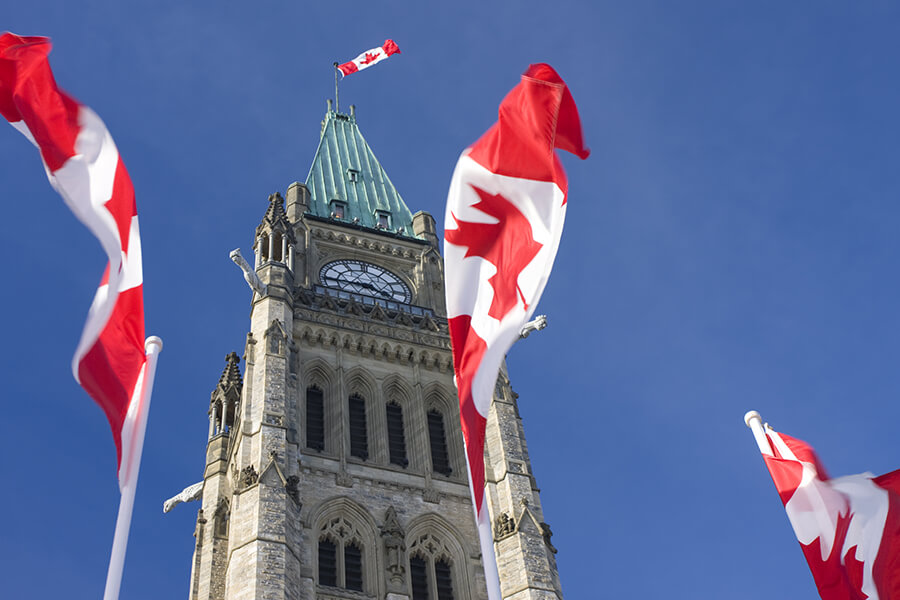On November 3, Finance Minister Chrystia Freeland provided an updated assessment on how the economy is faring, where it is headed and what kind of shape the country’s finances will be in for the next six years.
- The fiscal starting point looks considerably better than what we had seen in the Spring Budget, but the outlook is worse.
- High inflation and rising debt costs for businesses and consumers are slowing the economy and the government is responding with some targeted spending programs. The government needs to be careful, however, that fiscal support does not make the bank of Canada’s inflation-fighting job harder.
New major program directions: Targeted relief hits the mark, in most cases
The November 3 Fall Economic Statement focused on reiterating previously announced plans and showed some fiscal restraint in terms of new program announcements, a clear indication that the government is concerned too much additional spending would further fuel inflation. Still, there were a few new spending plans worth highlighting.
- Much like the $4.5 billion inflation relief package announced in September, there were a number of measures aimed at assisting those most impacted by sharply rising interest rates.
- The federal government is proposing to make all Canada Student and Apprentice Loans permanently interest-free beginning next spring, at a cost of $2.7 billion over five years. The relief is welcome news for early career professionals and prospective students.
- Housing affordability was yet again a major talking point. The federal government plans to create a new Tax-Free First Home Savings Account, giving first-time home buyers the ability to save up to $40,000, tax free. In addition, they plan to double the First-Time Home Buyers’ Tax Credit. There was no mention, however, on any measures to address housing supply, which also has significant affordability implications.
- To help smooth the path to better progress on big capital investment projects, the federal government is pledging additional resources through a national benefits-sharing framework to partner with indigenous communities, to ensure these communities can directly benefit from large projects.
- New immigration level targets combined with humanitarian support, in addition to investments in jobs for young people, will go a long way to contributing to Canada’s future growth and prosperity.
- Lastly, yesterday’s release included measures to encourage greater investment in low-emission products, by proposing a refundable tax credit equal to 30 per cent of capital cost of investments in products such as zero-emission vehicles and low-carbon heat equipment. The tax credit will certainly encourage investment in products that will help Canada reduce its emissions over the long haul. In terms of overall investment, however, the program will have a negligible impact, as it only targets a small selection of goods, keeping with the theme of few new initiatives.
It takes two to tango: Fiscal and monetary policy
- Any major additional spending in the coming months, on top of the $6.1 billion for 2022–23 announced, would make the BoC’s job of bringing inflation within its target range even more difficult. It would force the Bank to raise rates even more aggressively, catalyzing the impending economic slowdown.
- Besides, the shorter duration of the federal government debt compared to other advanced economies means that higher rates affect Canada more than others. If monetary and fiscal policy don’t work in tandem, there is a risk of an economic situation like the UK, where unfunded government spending spiked government bond yields, forcing the Bank of England to take a U-turn and start Quantitative Easing again.
Note to Government: Save today’s windfall revenue for tomorrow’s rainy day
- Gone are the days when interest rates were low-for-long and inflation was below the BoC’s target range. Instead, we have entered an era of high interest rates, sticky-high inflation, and economic volatility. In times like these, markets reward fiscal discipline and punish fiscal profligacy. Budget season or not, the government needs to stay away from announcing any new major additional spending, especially spending that supports more consumption.
- Government shouldn’t give into the temptation of spending away its revenue windfall (thanks to higher oil prices and growth in personal and corporate taxes). An economic slowdown is coming, and we might need today’s windfall revenue for tomorrow’s rainy day.
What’s in store down the road
- The federal government has had the advantage of a revenue tailwind as the economy enters a period of slowdown. Higher-than-forecast prices have boosted the nominal value of government revenues and strong performance through the early part of the year in the resource sector has supported employment and tax revenue.
- At $90.2 billion, Ottawa’s deficit was almost $24 billion lower than what was forecast in last spring’s Budget. Without introducing new measures, deficits would have dropped quickly to the low $20 billion range this year and next and would disappear by 2026–27. That boost, however, evaporates going forward as the costs of supporting a weaker economy kick in.
- The $44 billion in new spending measures over the next five years push the baseline deficit forecasts up ($+13.4 billion this year and +$9.5 billion next) and the date of a balanced budget out an extra year.
- Ottawa also puts forward another scenario on the downside that builds in what would happen if the economy goes into a significant recession in early 2023. Considering that the current fiscal year is more than half over, we are unlikely to see their downside scenario come to pass immediately.
- But stickier inflation and higher interest rates in response could result in a weaker fiscal outlook down the road. Even with the weaker scenario, the government is still expecting to see the federal debt to improve from last year’s 46.5 per cent of GDP to 40.6 per cent on by 2027–28 (or 37.3 per cent under their baseline assumptions).
- Either way, there is a lot that could go wrong over the next six years. Finance Minister Freeland acknowledges that Canada has had a poor track record in boosting business investment and that will weigh on future wage and employment potential. Demographics and geo-political factors add to the uncertainties.
- There is an implicit expectation that the energy transition to cleaner fuels or the reshaping of world trade flows with boost productivity, but those also involve large costs in advance of any potential benefits down the line. Federal policy has the potential to either increase or decrease the risks.
Overall, the government deserves credit for not announcing big, broad-based spending items but should keep its powder dry given the headwinds of a significant economic slowdown, stubbornly high inflation, and rising interest rates against a backdrop of increasing economic uncertainty.





Comments